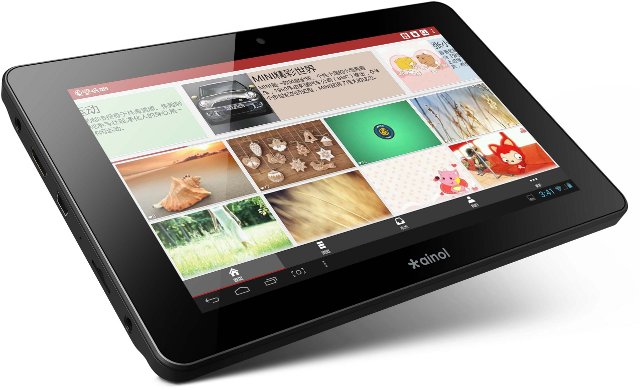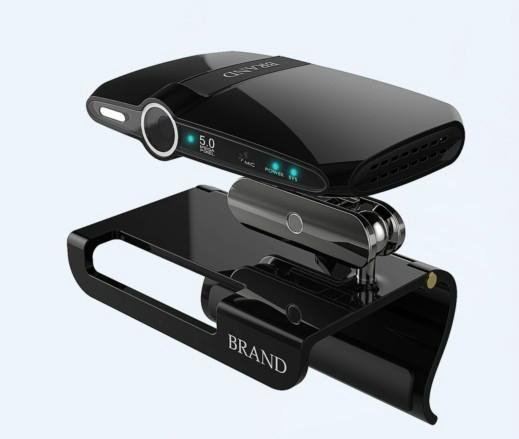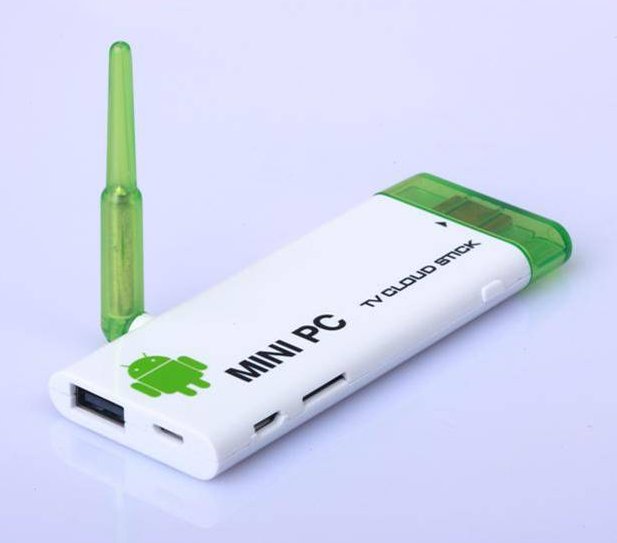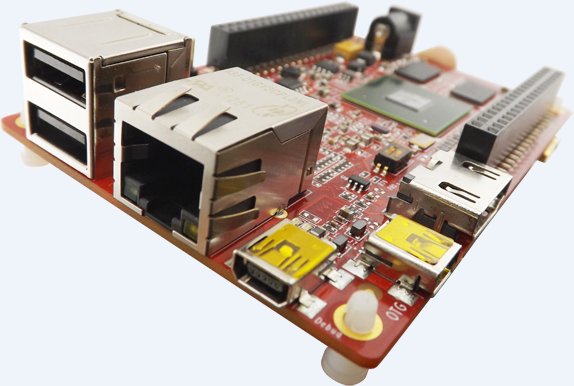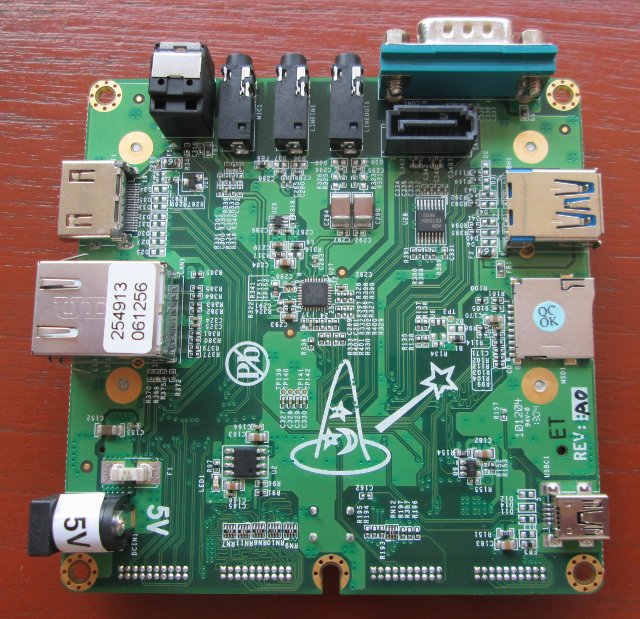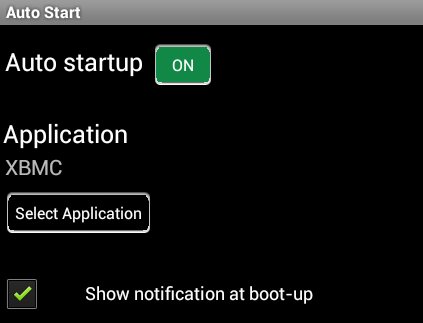One of the main issues with Linux on ARM is the lack of proper GPU drivers for the platform, as most silicon manufacturers now only focus on Android drivers which are not compatible with the Linux kernel, because Android is based on Bionic C library, whereas Linux is based on glibc or its variants. There are two ways to solve this issue: Open Source GPU drivers. This would be the ideal solution, as you would just be able to cross-compile the drivers for the proper, as well as fix bugs without having to ask the silicon manufacturer to fix the driver for you. Bionic to Glibc library. Such library acts like libdl, and allows to load Bionic library and overrides some symbols from bionic with glibc based ones. This is exactly what libhybris does. Ubuntu Touch is capable of using Android GPU drivers to run Ubuntu thanks to this library, […]
Ainol NOVO 7 Crystal II Quad Core 7″ Tablet is Available for $99
Earlier this year, several blogs and news website reported about Cherry Mobile, a 7″ Android tablet powered by Actions Semiconductor ATM7029 quad core Cortex A9 processor, that sells for just $99 in the Philippines. This morning I’ve found a quad core tablet with similar specifications that also sells for $99 on Asiapads (after using AINOLCII coupon) . The Ainol NOVO 7 Crystal II comes with a 7″ touchscreen, is powered by ATM7029 SoC with 1GB RAM and, 8GB NAND Flash. Tablet Specifications: SoC – Actions Semi ATM7029 Quad Core Cortex A9 @ 1.5 GHz + Vivante GC1000 (Plus) GPU System Memory – 1GB DDR3 RAM Storage – 8GB NAND Flash + micro SD slot Display – 7-inch capacitive touchscreen LCD (Resolution: 1024*600) Connectivity – WiFi: 802.11b/g/n Camera – 0.3 MP front camera Video Output – mini HDMI Audio I/O – 3.5 mm headphone jack USB – 1x micro USB OTG port […]
Veidoo HD2 Android Set-top Box Features a 5MP Camera
There seem to be more and more Android set-top boxes that can be fitted on top of the TV, but if you are mainly interested in video conference they may not always have very good cameras: MK818 comes with a 0.3MP camera and Archos TV Connect has a 1MP webcam according to Arctablet, which is good enough for 720p video conferencing. On the contrary, Veidoo HD2, an Android 4.0 set-top box powered by AllWinner A10, comes with a 5MP camera which should allow you, in theory, to do video conference in 1080p if your internet connection permits it. Here are the specifications of the device: SoC – Allwinner A10 Cortex A8 @ 1GHz + Mali-400 GPU Memory – 1GB RAM Storage – 8GB + micro SD slot (Up to 32GB) Connectivity – Wi-Fi 802.11b/g/n + 3G support via external 3G dongle Camera – 5.0MP auto focus Video Output – HDMI […]
CX-803 II Android mini PC Features 2GB RAM, an External Antenna
Several mini PCs have been claimed to come with 2GB RAM (e.g. S21H, MK812), but it turned out the sellers simply made a mistake, or possibly lied to sell a few more sticks. To date, the only HDMI TV dongle which you can buy and expect it to really come with 2GB RAM is the PQ Labs iStick A200, but we’ve now got another option with the CX-803 II (aka CX-803B or FX5) powered by Rockchip RK3066 with 2GB RAM, 8GB flash and a short external antenna. If the picture below looks similar, it’s because it’s an upgrade of CX-803 / AVS-TV603 with more RAM, more flash and built-in Bluetooth. Here are CX-803 II specifications: SoC – Rockchip RK3066 @ 1.6 GHz + Mali-400 MP4 GPU System Memory – 2GB DDR3 RAM Storage – 8GB NAND flash + micro SD slot (up to 32GB) Video Output – HDMI 1.4 Connectivity: […]
$99 MarS Board Features Freescale i.MX6 Dual, 4GB eMMC
Embest, a subsidiary of Element14, has just announced the MarS Board, a development board powered by Freescale i.MX6 Dual (2x Cortex A9) with 1 GB RAM and 4GB eMMC flash. This is not related to the Marsboard based on AllWinner A10, and designed & manufactured by another company. Here are the key features of the MarS Board: SoC – Freescale i.MX6 Dual 2xCortex-A9 Processor @ 1GHz + Vivante GC2000 GPU. System Memory – 1GB RAM (4*256MB DDR3 SDRAM) Storage – 4GB eMMC + micro SD card slot (up to 32GByte) Video Output – 1xHDMI interface, 1x LVDS interface and 1x LCD interface USB – 4x USB Host ports (2x USB connector, 2x via headers), 1x mini USB OTG port, and 1x mini USB for debug Connectivity – 10/100M/1Gbps RJ45 Ethernet interface 2 Expansion Hearders – 2x CAN, 2x IIC, Audio & SPDIF, 8bit IPU1(Camera), SPI, USDHC1(SD card), 4x UART, 2x […]
Wandboard Releases Updated Android and Ubuntu Linux Images and Source Code
Since I’ve received my previous short review of the Wandboard Dual development board, there has been more work on done the platform with new Android and Ubuntu images, Jelly Bean source, Linux SDK release, and git repo setup. I’ve tried the binary images, and had a quick look at the source code and corresponding documentation. Android 4.1.2 Image and Source Code Wanboard has release an improved Android image on the 14th of March which you can download for both Solo and Dual version of the development board with the following Changelog: Fix HDMI audio/playback issue with certain monitor. Add support for wifi on wandboard-dual. Known issue: Might need to turn off “Avoid poor connections” in Wi-Fi ->Advanced to keep connection alive. I’ve given it a try in Wandboard Dual, and it seems Ethernet support is gone (Sorry my mistake, Ethernet IS working, but there’s no indication when it’s connected, and […]
How to Autostart XBMC in Android
Android is great thanks to its versatility and the ability to install the apps you need. However, if you have an Android set-top box or mini PC connected to your TV, you may just want to use it as a media player running XBMC, and clicking on the XBMC icon each time you start your device is not ideal. Luckily, there’s an easy solution to autostart XBMC or any application in Android: Install AutoStart – No root in your Android device. Run the application and select XBMC as shown below. There’s no need to tick “Show notification at boot-up”, since XBMC will just show in the foreground. Done! Next time you restart your device XBMC will run automatically. I’ve tried it in Tronsmart Prometheus, and it boots to XBMC within 50 seconds. If you want to use another app in Android, simply exit XBMC. Jean-Luc Aufranc (CNXSoft)Jean-Luc started CNX Software […]
Linaro 13.03 Release with Linux Kernel 3.9 and Android 4.2.2
Linaro 13.03 is now available, and features Linux Kernel 3.9-rc3 and Android 4.2.2. This month, Linaro has released their first Origen Quad Android image, as well as Tiny Android build for Arndale. The ALIP image listed in the download page is still based on Ubuntu 12.11, but as doc Bormental noticed earlier this month, the latest ALIP Quantal 13.03 image is available for download at https://releases.linaro.org/latest/ubuntu/quantal-images/alip. Some development tools (gcc, g++, vi, make..) are now included in Android, so you can develop and build natively from your Android device. Linaro has kept on cleaning the Linux kernel ARM tree for Exynos and ST Ericson SoCs. More work has been done on big.LITTLE for both IKS and HMP, as well as ARMv8 OpenEmbedded, and an initial GRUB port on ARM UEFI is now available. Here are the highlights of this release: Automation and Validation A simple CLI tool for communicating with […]



